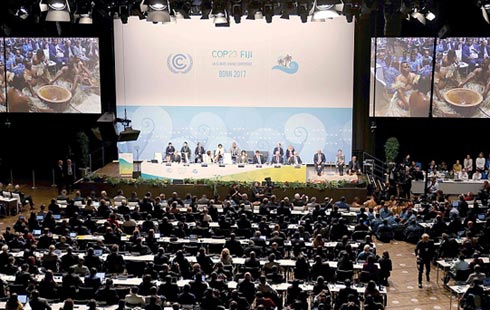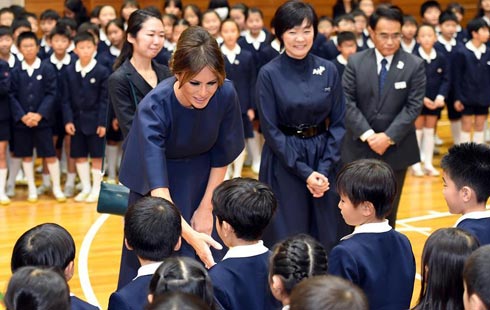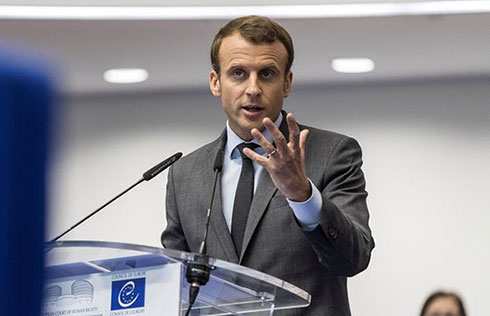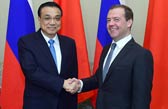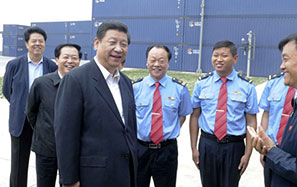Trade becomes key focus for Trump visit
Beijing says deliverables aside, it is moving toward easier market access
When US President Donald Trump arrives in Beijing on Wednesday, exactly a year after he was elected, he will be bringing with him key cabinet members and a delegation of top US business executives.
He will talk with President Xi Jinping on several key issues, notably the denuclearization of the Korean Peninsula and the bilateral economic and trade relationship. And he also will be witnessing the signing of major business deals ranging from energy to agriculture.
Cui Tiankai, the Chinese ambassador in Washington, said there will be significant "deliverables" on the economic and trade front during Trump's visit.
Those "deliverables" are expected to narrow the bilateral trade deficits, which Trump has been concerned with long before he started his presidential campaign.
Shortly before he embarked on his 11-day Asia trip, Trump described the US trade deficits with China as "horrible" and "embarrassing" while praising his good working relationship and personal relationship with President Xi.
Trade deficit
The bilateral trade deficit in 2016 hit $347 billion, according to the US Commerce Department. But according to China's General Administration of Customs, it was $251 billion, a gap of $96 billion.
The US takes in 16 percent of China's exports, making it the largest importer of Chinese products. China is the third-largest export market for both goods and services for the US. The US ran a surplus of $37.6 billion in services trade with China in 2016.
Apart from the numbers, China has argued that while it enjoys an overall surplus, the US reaps the most dividends.
A report by China's Ministry of Commerce in May showed that 59 percent of the surplus in the trade of goods is contributed by foreign-funded ventures in China, and 61 percent comes from processing trade, for which China retains meager fees.
A typical example raised is the assembly of Apple's iPhones in China. Their assembly accounts for roughly 2 percent of the phones' value. Most key components and value are supplied by companies in the US, Japan, South Korea and Germany. But in counting imports, the US uses the wholesale value.
Most economists agree that China's trade surplus with the US in the past two decades was largely due to the fact China has become the assembly line of East Asia, as companies in Japan, South Korea, Hong Kong and Taiwan moved their production to the Chinese mainland.
As a result, the US trade deficit with China grew, but its overall trade deficit with East Asia has not changed much.
Economists believe that the bilateral trade deficit does not matter, and a trade deficit has more to do with fiscal policy. The US has been running trade deficits since the mid-1970s. In 2016, the US had trade deficits with 99 countries.
Martin Feldstein, a professor of economics at Harvard University who chaired President Ronald Reagan's Council of Economic Advisors, also noted that foreign import barriers and export subsidies are not the reason for the US trade deficit.
"The real reason is that Americans are spending more than they produce," he wrote in an article on Project Syndicate.
"The overall trade deficit is the result of the saving and investment decisions of US households and businesses. The policies of foreign governments affect only how the deficit is divided among American trade partners."
China's concerns
Cui said that China does not seek trade surpluses.
To boost the country's imports, the Ministry of Commerce and the Shanghai Municipal Government will launch the first China International Import Expo (CIIE) in Shanghai from Nov 5-10, 2018.
China also has called on the US to further remove export restrictions on high-tech products for civilian use as a way to increase fair trade and expand US exports. Much of the US export-control regime was formulated in the Cold War era and is believed to be no longer relevant in today's world.
Vice-Foreign Minister Zheng Zeguang on Nov 3 expressed that the way to resolve the trade imbalance is to expand US exports to China and facilitate bilateral investment, rather than restrict US imports from China. "Both sides will lose in a trade war," he said.
While Zheng did not specify, the message is seen as reflecting China's displeasure with a US announcement in August of a Section 301 investigation into China's policies and practices on intellectual property. Section 301 under the US Trade Act of 1974 is regarded by many as outdated and inconsistent with World Trade Organization rules.
China also protested a US Commerce Department decision on Oct 27 to impose preliminary import duties on aluminum foil from China from 96.81 percent to 162.24 percent.
"It not only hurts the interests of Chinese companies but also dents the seriousness and authority of multilateral rules," said a statement posted on the Ministry of Commerce website.
China said that starting on Dec 11, 2016, 15 years after China's accession to the WTO, the US can no longer conduct anti-dumping probes against imports from China under the "analogue country methodology", calculating the value of products based on the costs of production in a third country. China has repeatedly demanded that the US fulfill its obligation to recognize China as a market economy.
On the investment front, China also has demanded fair treatment of Chinese investors in the US. Cui expressed China's dissatisfaction by saying that the US has used unspecified national security issues as an excuse to block Chinese investment in the US.
"If this is the trend, it should be a concern for us," Cui said on Oct 30.
US concerns
US officials, from Trump to Secretary of Commerce Wilbur Ross, have repeatedly talked about a fair, balanced and reciprocal trade relationship with China.
Senior White House officials expressed that progress on a range of bilateral economic issues with China has become increasingly difficult.
"We believe this reflects a slowdown and even a retreat in China's move toward a market-oriented economy," the senior official said on Oct 31 in a background briefing about Trump's Asia trip.
The official used the word "predatory" to describe China's trade and investment practices, and said Trump will continue to push China to follow through on commitment that it has made recently and also when it joined the WTO to take steps toward a more market-oriented economy.
Market access, technology transfer and intellectual property rights are some of the key issues raised by the US side over the years.
"People tend to think that China is an authoritarian country, therefore if the leader snaps fingers, things will happen," said Colin Grabow, a trade analyst at the Cato Institute.

Ryan Hass, a senior fellow at the John L. Thornton China Center of the Brookings Institution and a former Obama administration official concerned with China policy, noted the decreasing leverage on the US side, saying "China's dependence on the US market for its exports is not what it once was".
"When measured by value added, Chinese exports to the United States account for only 3 percent of its GDP. This figure will continue to decline as China's growth model becomes less export-dependent and more concentrated around domestic sources of growth," Hass wrote on the Brookings website ahead of Trump's visit.
Speaking in New York on Oct 25, Ross said the US is seeking "immediate" results and "tangible" agreements on trade with China during Trump's visit. He indicated that results on key issues such as market access, intellectual property rights and tariffs are more complex and may take longer to negotiate.
Progress
Unlike the days in the 2016 presidential campaign when Trump threatened a 45 percent punitive tariff on imports from China and to label it a currency manipulator, few people are now as worried about a trade war between the world's two largest economies as they were a year ago.
Stapleton Roy, a former US ambassador to China, Singapore and Indonesia, expressed disappointment in what he called the Trump administration's lack of a China policy after 10 months in office, saying "the policy people have not been appointed".
He said President Xi used the spring Mar-a-Lago summit in Florida to forge a personal relationship between the two men that helps to stabilize the relationship. "And that's very important," Roy said.
At Mar-a-Lago, the two sides agreed on a 100-day action plan in economic cooperation and also launched four dialogue mechanisms, including the first Comprehensive Economic Dialogue, held in Washington in July.
Despite some points of contention inside the White House on how to deal with China on trade, Roy believes both presidents want this to be a successful visit.
Cui admitted that disputes will only grow with a growing trade and investment relationship between the two countries, but he stressed that that is only small part of the economic relationship.
"These disputes should be handled in a very constructive and pragmatic manner, so it will not undermine the overall economic relationship," said Cui, adding that some issues will not be solved in one visit.
Zheng, the vice-foreign minister, dismissed the concern of a lack of economic reform in China, saying the recent 19th CPC National Congress pledged to deepen supply-side reforms, further open up to the outside world, implement high-standards trade and investment-facilitation policies and greatly reduce restrictions on market access.
"These measures will provide great opportunities for China to conduct mutually beneficial economic and trade cooperation with other countries, including the United States," he said.
chenweihua@chinadailyusa.com





